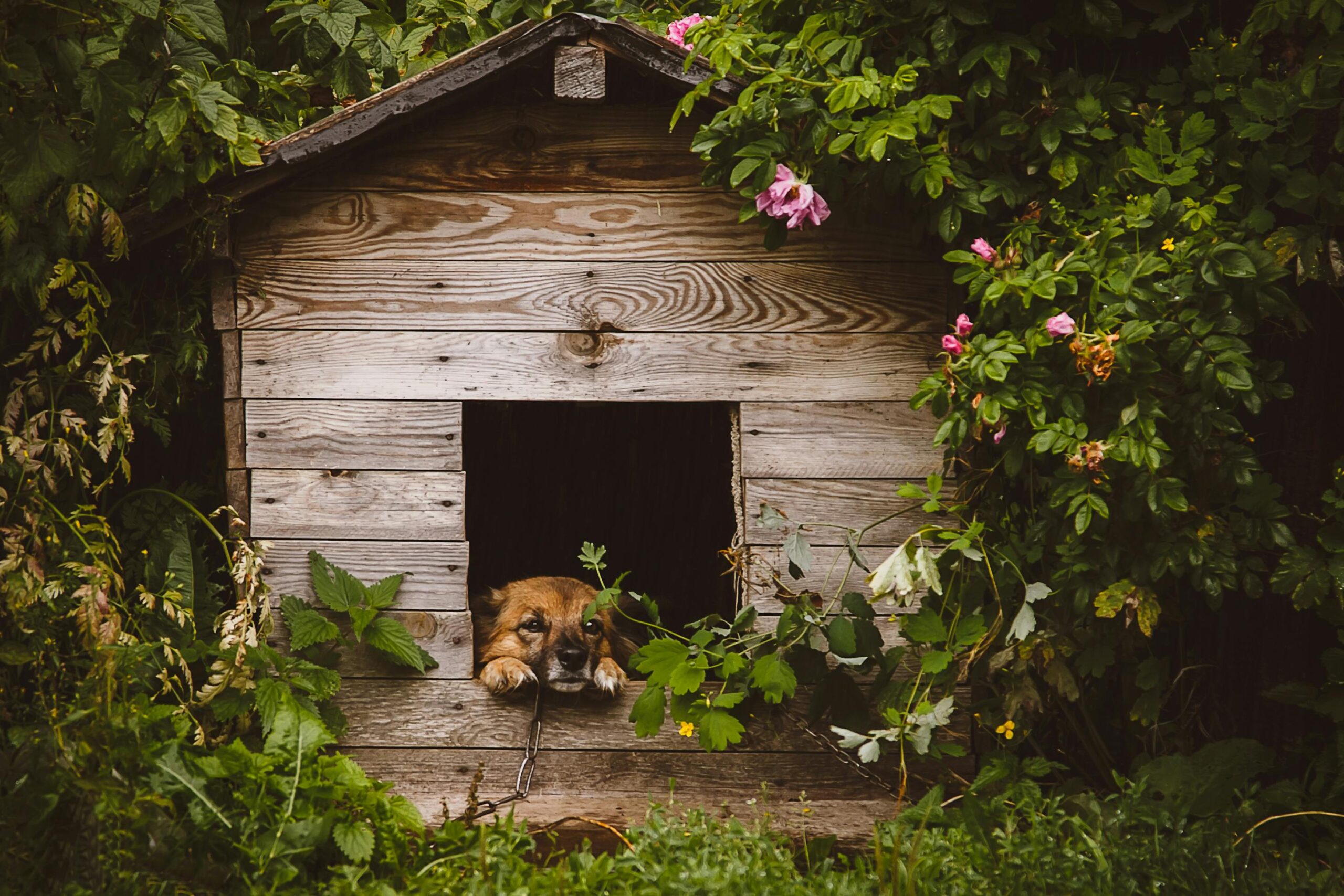| Summary: A dog kennel is used to provide a safe, structured space for dogs for housing, training, travel, and outdoor protection. It prevents wandering, aids house training, ensures secure transport, and offers temporary containment. Kennels vary in type, including indoor crates, outdoor enclosures, and boarding facilities, catering to different needs. |
A dog kennel is a secure and structured space designed for housing dogs, providing a safe environment for rest, training, travel, and outdoor protection. Kennels come in various types, including indoor crates, outdoor enclosures, and commercial boarding facilities. They serve multiple purposes, such as containment, safety, training, and temporary shelter. So, what is a dog kennel used for?
Choosing the right kennel depends on factors like the dog’s size, temperament, and intended use. While kennels offer many benefits, improper use or prolonged confinement can lead to anxiety and stress in dogs.
Ensure your Newfoundland’s comfort and security with expert tips on How to properly fit a collar for a Newfoundland.
Many dog owners wonder whether they need a kennel for their pet and how to use one effectively. In this guide, we’ll explore the different types of dog kennels, their primary uses, benefits, potential drawbacks, and how to choose the right one for your furry friend.
Blog Highlights
ToggleFAQs: What Is a Dog Kennel Used For?
What Is a Dog Kennel?
A dog kennel is a designated enclosure or structure where dogs can be safely contained, either temporarily or permanently. Kennels range from small, portable crates to large, outdoor enclosures designed for extended use. They can be made from materials like plastic, metal, or wood, depending on their purpose and location.
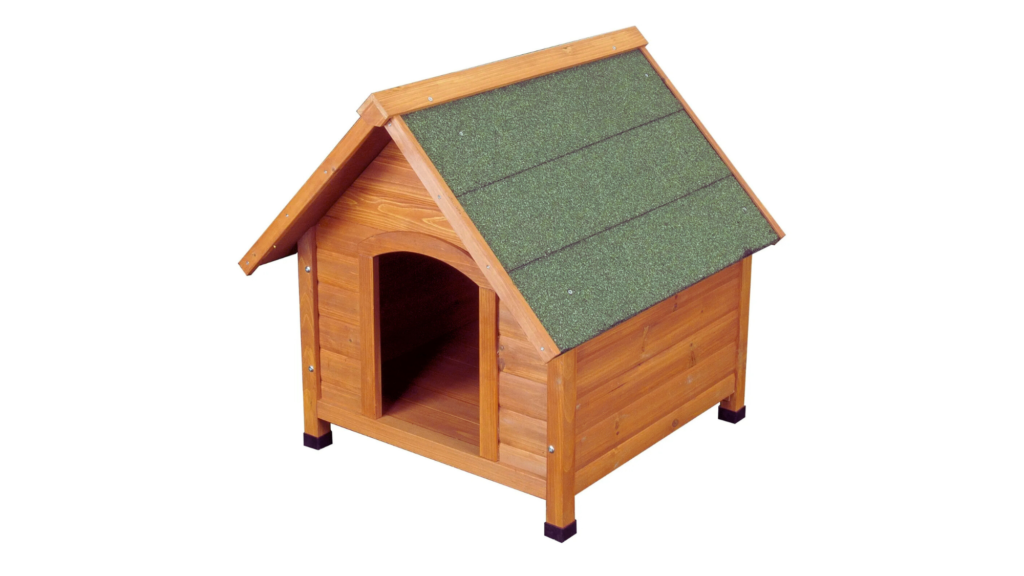
Types of Dog Kennels
Dog kennels come in various forms, each designed for specific needs:
- Indoor Crates – Small, portable enclosures made of plastic, metal, or fabric. Used primarily for training, housebreaking, or travel.
- Outdoor Kennels – Larger, more durable enclosures built for outdoor use. They provide dogs with fresh air and space to move while keeping them secure.
- Boarding Kennels – Commercial facilities that house multiple dogs, often used when owners are traveling or unavailable.
- Breeding Kennels – Designed for professional breeders to provide safe housing for multiple dogs.
- Rescue & Shelter Kennels – Used by animal shelters and rescues to house and care for homeless or abandoned dogs.
- Training Kennels – Facilities used for professional dog training, boarding, or rehabilitation programs.
Primary Uses of a Dog Kennel
1. Providing a Safe & Comfortable Space
Dogs, by nature, seek out enclosed spaces where they feel secure. A kennel offers a comfortable retreat where a dog can rest undisturbed. Many owners use crates indoors as a designated resting spot for their pets.
Kennels are essential tools for housebreaking puppies. Crate training teaches dogs to control their bladder and bowel movements, reducing indoor accidents. They also help curb destructive behaviors by preventing dogs from chewing furniture or getting into hazardous areas when unsupervised.
House Training & Behavior Management
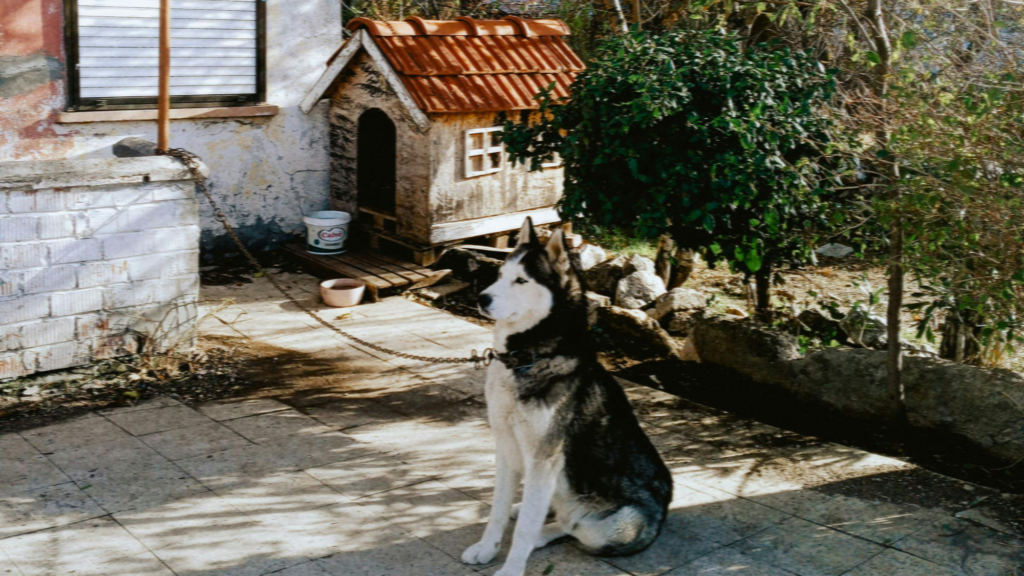
3. Travel & Transportation
Whether flying, driving, or visiting the vet, a kennel provides a safe way to transport dogs. Airline-approved travel crates ensure a secure journey for pets, reducing stress during travel. For car rides, kennels help prevent distractions and protect dogs from sudden stops or accidents. Discover the ideal fit by learning What is the ideal collar size for a Newfoundland? to ensure your pet’s comfort and safety.
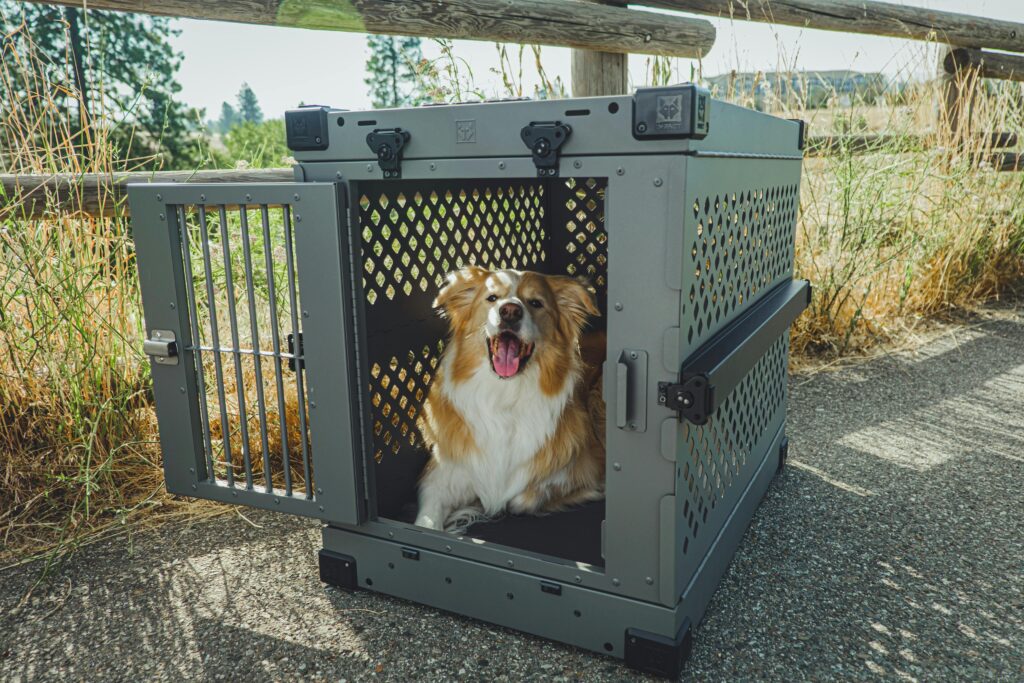
4. Outdoor Safety & Protection
Outdoor kennels provide dogs with a secure space to enjoy fresh air while preventing them from wandering off. This is especially useful for owners who don’t have fenced yards. Outdoor kennels protect dogs from traffic, predators, and other dangers.
5. Temporary Containment & Separation
Kennels are useful for separating dogs from guests, children, or other pets when needed. This helps in situations where a dog may feel overwhelmed, need a break, or require isolation due to illness or injury.
6. Boarding & Long-Term Stay
Many pet owners use boarding kennels when they travel. These facilities provide food, exercise, and socialization while ensuring dogs are safely contained. Boarding kennels can also be used for rehabilitation after surgery or for dogs needing special care.
7. Professional Training & Working Dog Use
Professional trainers use kennels to assist in training programs. Working dogs, such as police K9s and service dogs, are often housed in kennels when off duty.
Advantages of Using a Dog Kennel
1. Enhances Safety & Security
Kennels keep dogs safe by preventing them from escaping, running into traffic, or encountering dangerous situations.
2. Supports Training & Discipline
Proper kennel training can improve a dog’s behavior, making them more obedient and well-adjusted. For expert tips on How to properly adjust a collar for a Belgian Shepherd, this guide offers simple steps to ensure your dog’s collar fits securely and comfortably.
3. Reduces Anxiety & Overstimulation
Dogs can become overwhelmed by too much activity or noise. A kennel offers a quiet space where they can relax and feel secure.
4. Prevents Destructive Behavior
Crate training is an effective way to stop puppies from chewing on furniture, shoes, or electrical cords.
5. Convenient for Travel
Kennels make transportation easier, ensuring that dogs remain calm and secure during trips.
6. Great for Multiple Dog Households
Kennels allow multiple dogs to coexist peacefully, especially when introducing new pets.
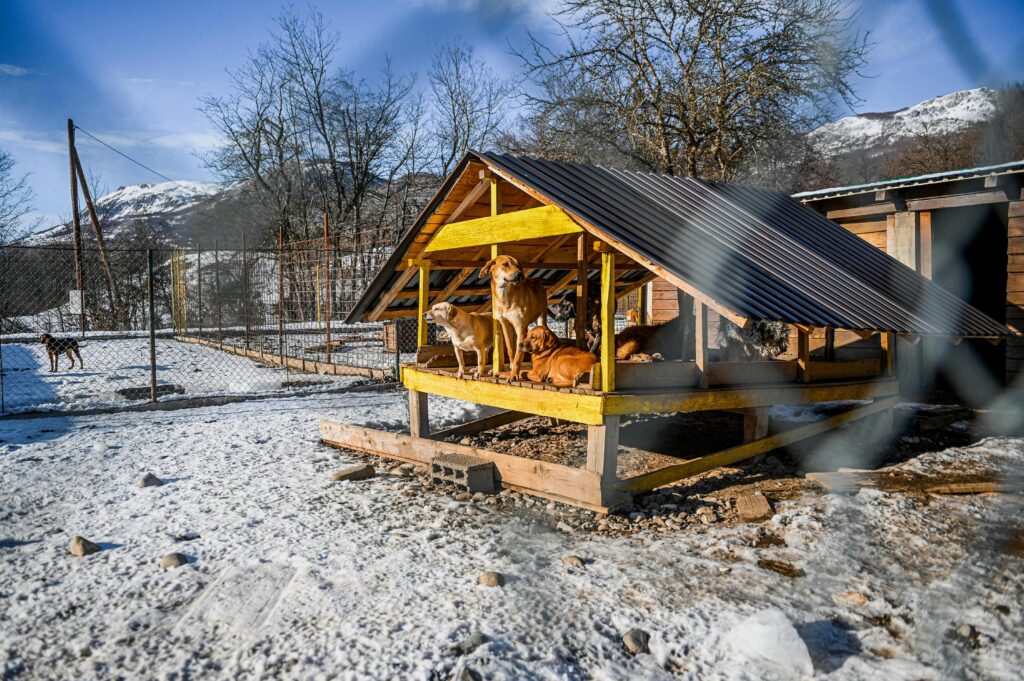
Common Drawbacks & Misconceptions
1. Kennels Are Not Meant for Permanent Confinement
While kennels provide security, dogs should not be confined for excessive periods. Long-term confinement can lead to anxiety, frustration, and physical discomfort.

2. Not All Dogs Enjoy Being in a Kennel
Some dogs take longer to adjust to kennels, requiring patience and positive reinforcement during training. For detailed guidance on selecting the Ideal collar size for a Belgian Shepherd, this article provides essential tips to ensure your dog’s comfort and safety.
3. Improper Use Can Cause Behavioral Issues
If a kennel is used as punishment or for excessive isolation, it may create fear or aggression in dogs.
4. Outdoor Kennels Require Proper Weather Protection
Dogs kept in outdoor kennels need adequate shelter, insulation, and access to fresh water to stay comfortable in different weather conditions.
How to Choose the Right Kennel for Your Dog
When selecting a kennel, consider the following factors:
✔ Size – The kennel should be large enough for the dog to stand, turn around, and lie down comfortably.
✔ Material – Choose a durable material based on your dog’s size and behavior (e.g., metal for strong chewers).
✔ Purpose – Determine if you need an indoor crate, outdoor kennel, or travel carrier.
✔ Ventilation & Comfort – Ensure the kennel has proper airflow and a comfortable base.
✔ Portability & Storage – If you travel often, look for a foldable or lightweight kennel.
Training Your Dog to Use a Kennel
To ensure your dog associates the kennel with positive experiences, follow these steps:
Step 1: Introduce the Kennel Gradually
Place treats, toys, and bedding inside the kennel. Let your dog explore it without forcing them inside.
Step 2: Create a Positive Association
Feed your dog inside the kennel and reward them when they voluntarily enter.
Step 3: Use Short, Positive Sessions
Start by closing the door for a few seconds, gradually increasing the duration as your dog becomes comfortable.
Step 4: Never Use the Kennel as Punishment
A kennel should be a safe space, not a place for discipline.
Step 5: Be Patient & Consistent
Some dogs take longer to adjust, but with consistency, they will learn to enjoy their kennel.
Discover the perfect collar size for an Anatolian Shepherd Dog to ensure comfort and security for your furry friend.
Common Kennel Issues & Solutions
Kennels provide a safe and secure space for dogs, but they can come with their own set of challenges. Many dog owners face issues such as excessive whining, escape attempts, and reluctance to enter the kennel.
These problems often stem from anxiety, improper kennel setup, or past negative experiences. Understanding these issues and implementing effective solutions can help ensure that your dog sees their kennel as a positive and comfortable space rather than a place of confinement.
1. Dog Whines or Barks in the Kennel
Cause: Anxiety, Boredom, or Lack of Exercise
One of the most common complaints from dog owners is that their dog won’t stop whining or barking when placed in a kennel. This can be frustrating, especially if it disrupts sleep or annoys neighbors. In most cases, excessive vocalization stems from separation anxiety, boredom, or excess pent-up energy. Dogs are social animals and may struggle with being left alone, especially if they haven’t been trained to see the kennel as a safe space.
Solution: Provide Exercise, Mental Stimulation, and Comfort Items
To prevent this issue, ensure that your dog gets plenty of physical exercise before being placed in the kennel. A tired dog is far less likely to bark or whine excessively. Depending on the breed, at least 30 to 60 minutes of exercise per day is recommended. High-energy breeds such as Border Collies or Labradors may require even more activity.
Additionally, providing interactive chew toys, puzzle feeders, or frozen treats can keep your dog mentally engaged while in the kennel. Some dogs find comfort in hearing familiar sounds, so playing soft music or white noise can help them relax. If anxiety persists, consider using a calming pheromone diffuser like Adaptil to create a soothing environment.
2. Dog Tries to Escape
Cause: Incorrect Kennel Size or Lack of Training
If a dog consistently tries to break out of its kennel, it’s often a sign that the kennel is either too small, uncomfortable, or the dog has not been properly conditioned to stay inside. Some dogs may also try to escape due to underlying separation anxiety or fear of confinement. When a kennel is too restrictive, dogs may feel trapped and resort to chewing, scratching, or even injuring themselves in an attempt to escape.
Solution: Use a Secure Kennel and Train Gradually
First, ensure that the kennel is the right size for your dog. A kennel should be large enough for the dog to stand up, turn around, and lie down comfortably, but not so large that they can pace around excessively. If the kennel is too spacious, dogs may also use one end as a bathroom, leading to house training setbacks.
Gradual training is key. Start by introducing the kennel in a positive way, allowing your dog to explore it freely without being locked inside. Offer treats and praise when they voluntarily enter the space. Use short confinement periods at first, gradually increasing the duration to build comfort and confidence. For dogs who tend to chew their way out, opt for a heavy-duty metal kennel instead of plastic or wire crates.
3. Dog Refuses to Enter the Kennel
Cause: Negative Past Experiences
Some dogs develop fear or resistance toward kennels due to past negative experiences, such as being locked in for long periods or being punished while inside. If a dog associates the kennel with stress, they will naturally avoid entering it. This issue is especially common in rescue dogs who may have been confined excessively in shelters.
Learn more about the unique double-layered coat of an Anatolian Shepherd and how to care for it effectively.
Solution: Make the Kennel Inviting with Positive Reinforcement
To overcome this, make the kennel a welcoming and positive place rather than a space of punishment. Start by placing soft bedding, favorite toys, and treats inside to encourage exploration. Feed your dog meals near or inside the kennel to build a positive association.
For particularly hesitant dogs, try a step-by-step approach. Leave the door open and allow them to go in and out freely without forcing them inside. Reward even small interactions, such as sniffing the kennel or stepping inside momentarily. If needed, use a high-value treat, such as boiled chicken or peanut butter, to create a strong incentive. Over time, your dog will begin to see the kennel as a safe retreat rather than a place of confinement.
By addressing these common kennel issues with patience, training, and positive reinforcement, you can create a stress-free environment where your dog feels secure and comfortable.
Final Verdict: What Is a Dog Kennel Used For?
A dog kennel is a valuable tool for pet owners, offering safety, comfort, and convenience for dogs. Whether used for training, travel, containment, or outdoor safety, kennels play a crucial role in dog care.
For insights on whether Pomeranians should wear a collar, including considerations for safety and alternatives, check out this informative article.
✔ Best for: Pet owners looking for a structured way to train, transport, or house their dogs safely.
✖ Not ideal for: Owners who leave their dogs confined for long hours without breaks.
When used correctly, a dog kennel enhances a dog’s well-being and provides peace of mind for owners. Now that you know the answer to what is a dog kennel used for, you can confidently choose the right one for your furry friend!

